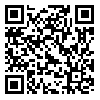BibTeX | RIS | EndNote | Medlars | ProCite | Reference Manager | RefWorks
Send citation to:
URL: http://rehabilitationj.uswr.ac.ir/article-1-167-en.html
Objective: As it is important to localize the different models of rehabilitations, in this study we introduce the Japanese psychological rehabilitation (Dohsa-Hou) and examine the effect of Dohsa Hou on the physical and mental state of children with disability.
Materials & Methods: In this Quasi-experimental with pre-post study design, totally 120 convenient children with cerebral palsy (CP) and mental retardation (MR) (60 CP and 60 MR) from rehabilitation centers in Tehran (age from 5 to 10 years old) were participated. Each child had 24 sessions of one hour therapy during 3 months (total 2880 sessions). In this interventional study, the effect of Dohsa in improvement of spinal curve situation and improvement in static stability in hip complex in children with cerebral palsy, and also the effect on the posture, movement and social interaction level of children with mental retardation were measured. The assessment package (flexible curve & clinometric device), Social interaction questionnaire and drawing devices were used as tools of study. Data was analyzed by using Willcoxon and ANONA tests.
Results: The findings showed that in children with cerebral palsy, the pre and post data analysis indicated a significant differences (P<0/05) which show the improvement of spinal curve situation and improvement in static stability in hip complex decrees of abnormal postural ton. In children with mental retardation, their posture and movement improved according to the expert’s ratings (P=0/237) and their level of social interaction changed (P<0/001), specially the level regarding parents and friends.
Conclusion: From the clinical observation and data analysis, we can suggest that Dohsa-hou is an effective method of rehabilitation for physically and mentally disorder children and can be used beside other methods of therapy as a complementary method
Received: 16/02/2008 | Accepted: 14/10/2015 | Published: 14/10/2015
| Rights and permissions | |
 |
This work is licensed under a Creative Commons Attribution-NonCommercial 4.0 International License. |





